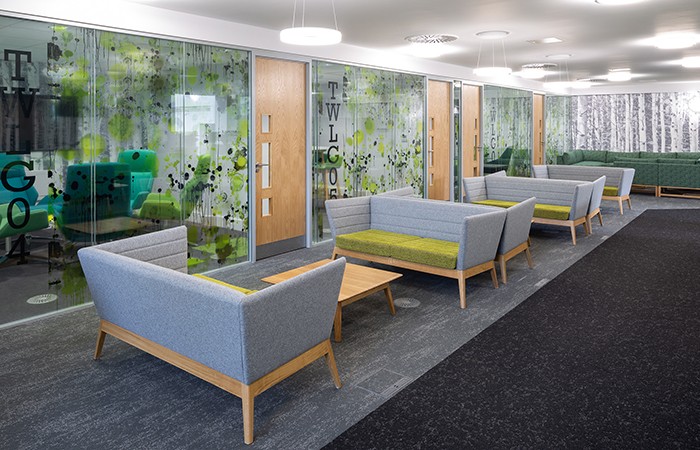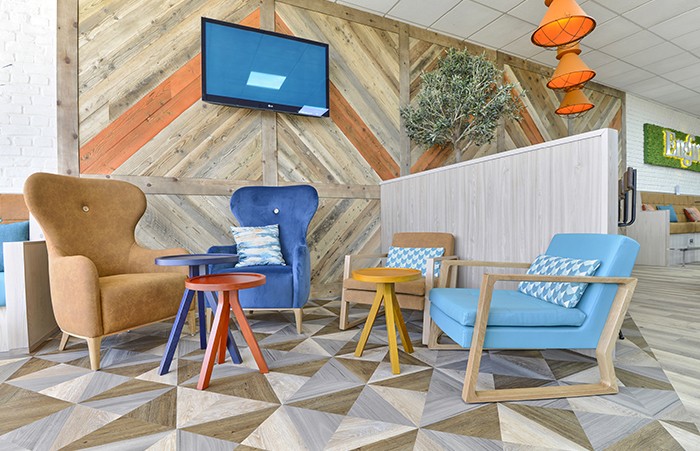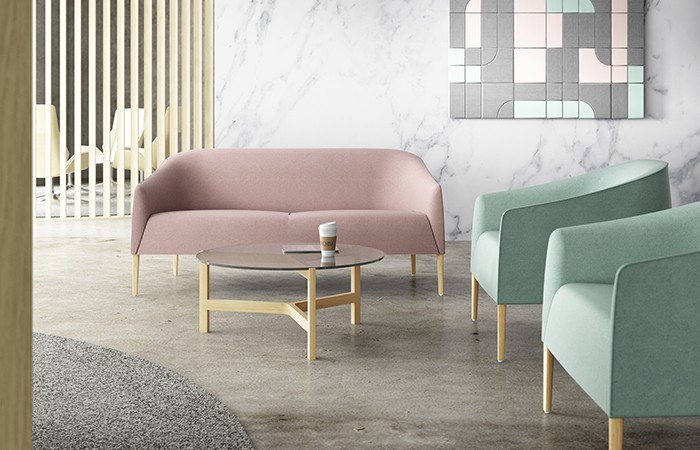The greatest wealth is health
Tim Armitt, Managing Director at Lyndon, explains why it’s more important than ever for designers to create environments that are conducive to good health and wellbeing.
Health and wellbeing are hot topics across all walks of life. From the food we eat to daily mindfulness, meditation and yoga practices, it seems like everyone is hitched to the wagon of good health. The interior design sector is no different.
The quality of indoor environments can have an enormous impact on our health and wellbeing; affecting our mood, energy levels, concentration, productivity and ability to relax. Given that we spend an estimated 90% of our lives indoors, it’s vital that our interiors are designed to inspire good health.
In addition to lighting, acoustics, air quality and furniture, soft seating plays a key role in maintaining good health. Once specified purely for visual aesthetics and comfort, it’s now central to a design scheme based on the added value it can bring in terms of functionality, relaxation and wellbeing. Take the workplace, for example.
Cleverly designed and properly managed workplaces now play a beneficial role in promoting employee wellbeing. Today, it’s all about creating environments that foster creativity, collaboration, innovation, calm and thoughtfulness.
For instance, when we are able to choose the right kind of space or ‘Habitat’ for the work we do, we have a greater sense of control that helps us feel more empowered, engaged, less stressed, and overall much happier. By furnishing separate spaces with flexible, ergonomic and comfortable soft seating, not only do productivity levels soar, it further benefits our wellbeing, too.
Whether soft seating is used to furnish informal collaborative spaces, to create quiet areas for focus, concentration and headspace, or to make visitors and customers feel at ease in receptions and welcome spaces, it bridges the gap between formal and informal settings. It also offers respite from desks and the opportunity to relieve muscle fatigue, eyestrain and to restore our levels of concentration.
Most popular specifications in the workplace include modular soft seating that can accommodate large groups of people, together with privacy booths and meeting booths that can be used for collaboration, breakout and informal gatherings. Bespoke booths are also a popular addition to corporate work cafés. Upholstered seating that features integral charging points for mobiles and laptops are now sought after as they facilitate convenience and connectivity for the user; enabling them to perform their tasks when and where they want.
Similar changes can be seen in the hotel sector where establishments have had to reinvent their communal spaces and lobbies to accommodate a range of activities.
No longer just centred around relaxation and play, they now cater for work activities too in order to keep corporate guests happy and productive. Now, it’s common to find informal meeting booths and freestanding telephone booths dotted around communal spaces.
Whilst soft seating has to be comfortable, the ergonomics are also crucial to our health, especially in the workplace where we tend to spend a large proportion of the day seated. All bodies are different and what works for one person may not work for another.
However, great steps have been taken to ensure that soft seating now strikes a balance between relaxation, comfort and postural support. Whilst the use of lumbar cushions provide a visual aesthetic as well as added support, it’s the hidden details such as the quality of the timber frame and the suspension that are just as important.
Today, it’s crucial that each interior space is tailored to meet its intended purpose in order to inspire the good health and wellbeing of its occupants. At the end of the day, the greatest wealth we will ever have is good health.
Contact Lyndon through the BCFA Product Finder








